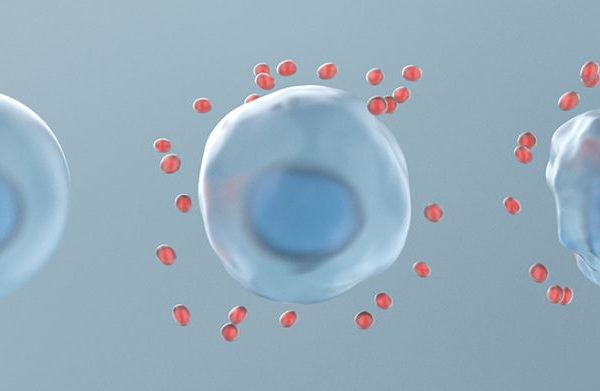
SHA Magazine Health & Beauty
Coeliac disease vs. Non-Coeliac Gluten Sensitivity
Gluten consumption is affecting an increasing number of people worldwide, raising common questions such as: “If I have gluten sensitivity, does it mean that I have coeliac disease?” or “Does having coeliac disease mean that I have an autoimmune disease?” It is important to clarify that the diagnosis of coeliac disease is based on a differential medical process, and that being unable to ingest gluten is not a personal choice or a simple whim. In any case, the diagnosis of coeliac disease must be determined by specialised professionals, in order to establish this condition with certainty.
Coeliac disease (CD) is a multisystemic pathology with an autoimmune basis, caused by gluten and prolamins in individuals who are genetically susceptible to these substances.
“The disease is characterised by the presence of a combination of gluten-dependent clinical manifestations, CD-specific antibodies, HLA DQ2 or DQ8 haplotypes and enteropathy”. This definition is the most widely accepted and was updated by the European Society for Paediatric Gastroenterology, Hepatology and Nutrition in 2012.
It is estimated that the disease has a prevalence of 1% among Europeans and their descendants. It is more common in women and it is estimated that at least 75% of sufferers are undiagnosed.
Experts say the disease has an autoimmune basis. This means that the development of the coeliac condition is due to the action of the immune system which forces the defences of the person with coeliac disease to overreact to the ingestion of gluten. In this case, the autoimmune reaction damages the mucosa of the intestine and destroys the intestinal villi responsible for absorbing the nutrients needed to maintain good health.
But the disease also has a genetic basis marked by the presence of the HLA DQ2 and DQ8 haplotype markers which indicate a predisposition that increases the likelihood of developing the disease. However, having compatible genetics does not mean that you will develop the pathology, there are other factors involved, and one of them can be the immune system.
As Dr. Marien Silva of the SHA Wellness Clinic’s Well-ageing Department explains, the most accepted definition of autoimmune disease is a pathology in which the immune system mistakenly attacks the body’s own tissues and cells instead of protecting the body against external invaders, for example bacteria and viruses.
The immune system, explains Dr. Silva, is very complex and this makes autoimmune diseases difficult to tackle, as symptoms vary greatly from patient to patient, and there isn’t a single cause, which makes it difficult to diagnose the disease early and accurately.
“In addition, many treatments for autoimmune diseases involve suppressing the immune system, and this causes patients to be more susceptible to infections and other side effects.” Moreover, not all people respond equally to treatment, so the approach to these pathologies requires an individualised approach.
It is believed that the Western lifestyle may be influencing the high incidence of autoimmune diseases. “One of the crucial factors is diet, which in the West is often high in saturated fats, refined sugars and processed foods, and has been linked to gut dysbiosis. When the microbiota is out of balance, it can lead to a chronic inflammatory response in the gut which, in turn, triggers inappropriate immune responses. This chronic inflammation can affect negatively immune regulation,” says Dr. Silva.
She explains that an imbalance in the microbiota can also increase the permeability of the intestinal lining, allowing unwanted substances to enter the bloodstream. This can activate inappropriately the immune system, contributing to the development of autoimmune diseases.
In addition, a number of common Western lifestyle circumstances contribute to chronic inflammation and exacerbation of autoimmune diseases, including low physical activity, chronic stress and exposure to environmental chemical substances. Dr. Silva is very clear: “Specifically, chronic stress can have a negative impact on immune function”.
Is having a gluten intolerance the same as having coeliac disease?
No. There is a gluten sensitivity that was first described in 1970 and, since 2011, has begun to be intensively studied to determine whether gluten is the sole cause of the symptoms or whether other components in wheat or cereals may be involved in these reactions.
This sensitivity is known as Non-Celiac Gluten Sensitivity (NCGS) and is a controversial and disputed term. What we know so far with absolute certainty about this pathology is that the patient has the digestive and extra-digestive symptoms characteristic of coeliac disease, but, according to the diagnostic tests, the patient does not have coeliac disease. The patient does not test positive for gluten or wheat allergies either. The symptoms improve when a gluten-free diet is followed and worsen when gluten is reintroduced into the diet.
To date, there isn’t a specific test to diagnose this intolerance, but it is known that, in order to conclude that a patient has non-coeliac gluten sensitivity, it is necessary to have ruled out coeliac disease (negative anti-transglutaminase and anti-endomysial antibodies in the blood and no atrophy of the intestinal villi is observed in the biopsy). In addition, wheat allergy must have been ruled out, and symptoms must have improved after four to six months on a strict gluten-free diet. Likewise, when gluten is reintroduced, these symptoms should return and worsen.
The experts point out that the clinical improvement after eliminating gluten from the diet and the subsequent relapse after reintroducing it can be attributed to the so-called placebo effect, as in both cases the subjective factor in each patient is decisive in the perception of his or her state of health. To minimise this uncertainty and reduce errors, in 2018, the Ministry of Health published recommendations in the Protocol for the Early Diagnosis of Coeliac Disease, which advises the double-blind strategy (whereby neither the doctor nor the patient know when gluten is introduced or eliminated from the diet). In this way, a better assessment of the patient’s clinical reaction could be obtained.
Clinicians point out that the gluten-free diet restricts not only this protein, but all other components of gluten-containing cereals (especially wheat), and, for this reason, a name change is preferred and the pathology is referred to as a non-coeliac gluten or wheat intolerance or sensitivity syndrome, until the exact cause is defined.





